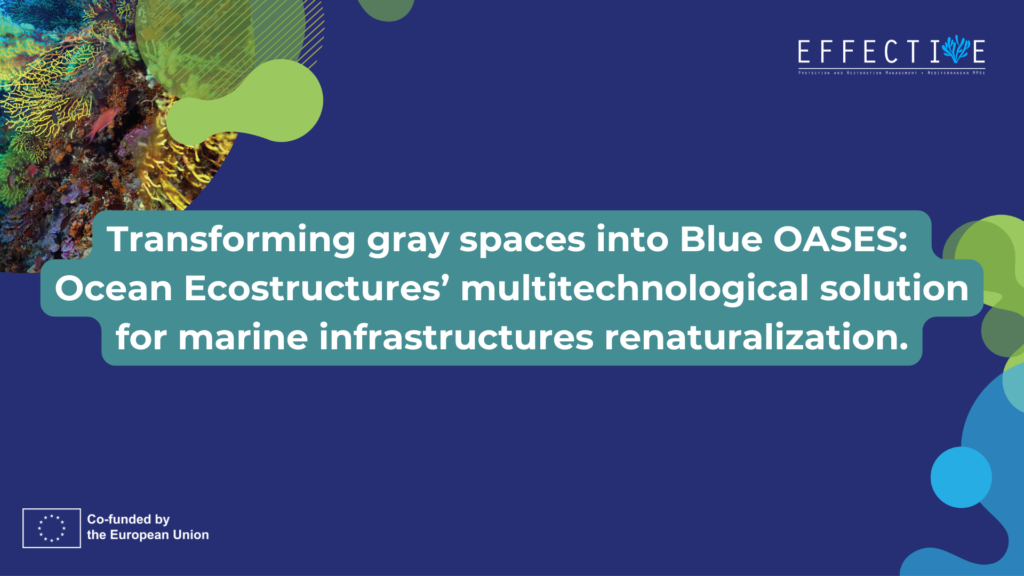
Introduction
Marine ecosystems are facing numerous threats, including global warming, overpopulation, pollution, increasing energy consumption, overexploitation of natural resources, and disruptions to natural processes. These anthropogenic activities are accelerating biodiversity loss and increasing species endangerment. Ocean temperatures have also risen as a result of climate change, leading to shifts in marine species distribution, coral bleaching, and disruptions to marine ecosystems (Pörtner, H.O., et al., 2021).
Approximately 87% of the ocean’s area has been altered by the direct impact of human activities (Pörtner, H.O., et al., 2021). For instance, while human marine infrastructures such as ports, offshore platforms, and submarine cables are essential for economic development, they significantly contribute to the degradation of marine ecosystems (Komyakova, V., et al., 2022).
In response to these challenges, active restoration measures, when combined with regulatory strategies such as the designation of Marine Protected Areas (MPAs), have been shown to positively impact degraded ecosystems (Abelson, A., et al., 2016).
A prime example of this innovative approach is the multitechnological solution proposed by Ocean Ecostructures (OE), specifically designed to restore marine ecosystems by renaturalizing human-made infrastructures, offsetting the impact of human activities on oceans. Their unique biomimetic microreefs transform degraded “gray” areas into thriving “blue oases,” promoting biodiversity regeneration, increasing biomass, and restoring vital ecosystem services, aiming to mitigate these pressing global threats. Additionally, OE’s unique AI and ROV based monitoring system, and its comprehensive reporting platform provides scientific value, ensuring validated and scalable lasting ecological impact.
Moreover, ecological restoration is crucial, as habitat-forming species often fail to naturally recruit or develop in degraded ecosystems, even after the primary stressors causing degradation have been mitigated or removed (Vanderklift, M. A., 2020). Therefore, OE implements pre-seeding and transplantation techniques to enhance the settlement and repopulation of ecologically important marine species, including macroalgae, corals, sponges, and marine angiosperms such as Posidonia oceanica, a Mediterranean endemic protected species crucial for habitat stability and biodiversity.
Main Body
OE’s solution includes a multitechnological approach made by its biomimetic artificial microreef, the Life Boosting Unit (LBU), which replicates the functionality of natural reefs, fostering resilient ecosystems. LBUs feature a natural CaCO3 substrate akin to coral skeletons, offering up to six times the regenerative capacity of traditional materials and providing spaces for fish nurseries and marine species shelters. The microreefs contain a proprietary LifeBoostingMix designed to attract microfauna and larvae, enhancing biodiversity recovery. Moreover, the anchoring system does not interfere with operations and allows the integration into existing marine infrastructures.
Using advanced technologies such as ROVs, multiparametric probes, continuous monitoring sensors, and AI models for species identification, along with other technologies, OE collects critical data on biodiversity, biomass, water quality, carbon dioxide removal (CDR), and oxygen generation. All this information is stored in a digital platform (iOceans), which is accessible to customers, enabling them to meet their ESG/Compliance requirements, offset their negative impact, and enhance social engagement. The platform provides a comprehensive dashboard displaying historical trends, predictive models, and impact assessments.
OE’s innovative solutions align with global standards like the CSRD and TNFD, integrating ecosystem services and natural capital evaluations into sustainability strategies. By leveraging cutting-edge technology and ecological expertise, OE not only supports environmental restoration and CDR efforts but also empowers clients to measure and amplify the positive impacts of their operations over time, turning them into active allies in the collective mission for marine sustainability.
According to data analyzed up to February 2025, the 192 LBUs that have been in the water for more than six months have accumulated a biomass of 3,667.9 kg, a species richness index of 315, and have removed 1,543.7 kg of CO2. These results surpass by three times the values recorded in conventional port environments primarily composed of concrete, demonstrating a significant improvement in ecosystem health, water quality, and contribution to climate change mitigation.
On the other hand, the SEAREG project constitutes one of OE’s key research initiatives. The primary objective is to investigate and standardize methodologies for the ecological repopulation of different marine species. This encompasses all stages of the restoration process, from the collection of propagules, fragments, or individuals in natural environments to their processing and cultivation under controlled laboratory conditions, followed by their final transplantation into the real environment on the LBUs.
Nature-based Solutions implemented in EFFECTIVE
Within the framework of the EFFECTIVE project, OE will implement a series of large-scale marine restoration actions aimed at enhancing biodiversity and ecosystem resilience. As part of its strategy, OE will deploy these LBUs in selected areas within the Pilot 1 of the project (Mar de l’Empordà, Catalonia, Spain), specifically at Club Nàutic Estartit harbor and the nearby Cala Calella, as a positive control. In addition to the LBUs and the pre-seeding of flagship species—such as gorgonians (Leptogorgia sarmentosa), angiosperms (P. oceanica) and macroalgae (Cystoceira spp. and Ericaria mediterranea)—OE will design and implement a large-scale artificial reef to further promote habitat restoration and ecosystem functionality. This initiative integrates ecosystem-based management (EBM) with Nature-based Solutions (NbS), ensuring long-term ecological benefits while contributing to Mediterranean marine conservation efforts.
Current experiments, conducted both in controlled laboratory conditions and in situ, focus on refining pre-seeding techniques for Posidonia oceanica (using both seeds and fragments), Leptogorgia sarmentosa, Cystoseira spp., and other macroalgae. Research efforts include optimizing collection, ex situ cultivation, and transplantation to enhance survival and settlement. A key aspect is the use of OE’s bio-receptive pre-seeding plates, designed to support species-specific recruitment and ensure a standardized approach to marine repopulation.
Conclusion
n response to the escalating threats to marine ecosystems, innovative restoration strategies are essential to mitigate biodiversity loss and habitat degradation. Ocean Ecostructures integrates multitechnological Nature-based Solutions, as its biomimetic artificial reefs together with monitoring and reporting advanced technologies, to enhance marine ecosystem renaturalization.
By replicating natural reef structures and leveraging pre-seeding and transplantation techniques, OE promotes the settlement of ecologically significant species, fostering biodiversity recovery. Additionally, OE’s comprehensive monitoring system, utilizing ROVs, AI models, and digital platforms, ensures scalable, scientifically validated restoration efforts.
Through projects like SEAREG and EFFECTIVE, OE contributes to the standardization of ecological repopulation methodologies and the implementation of large-scale NbS, aligning marine conservation with global sustainability standards.
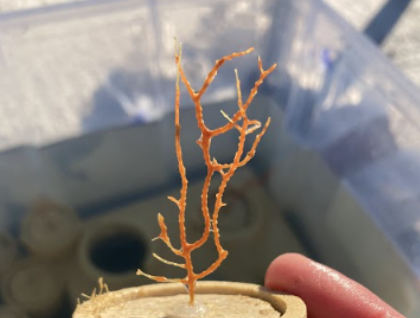
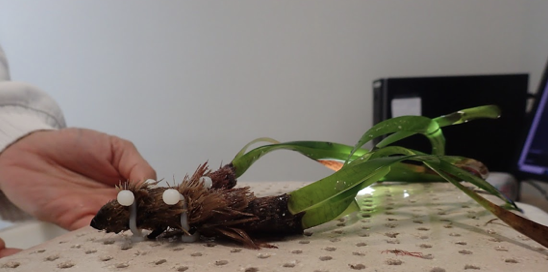
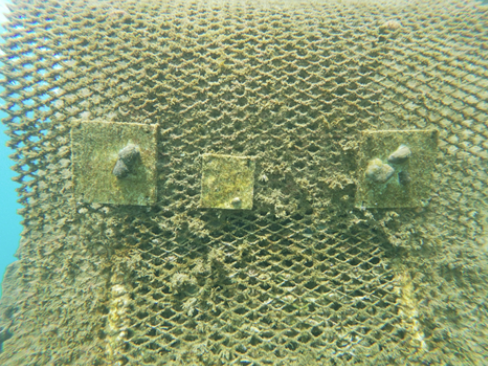
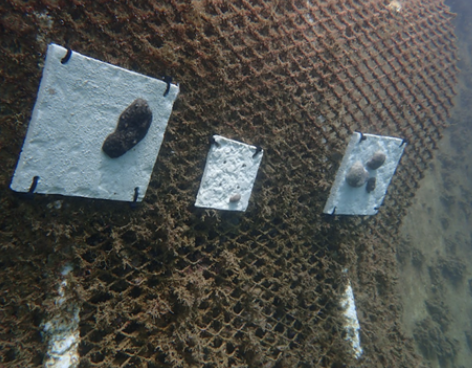
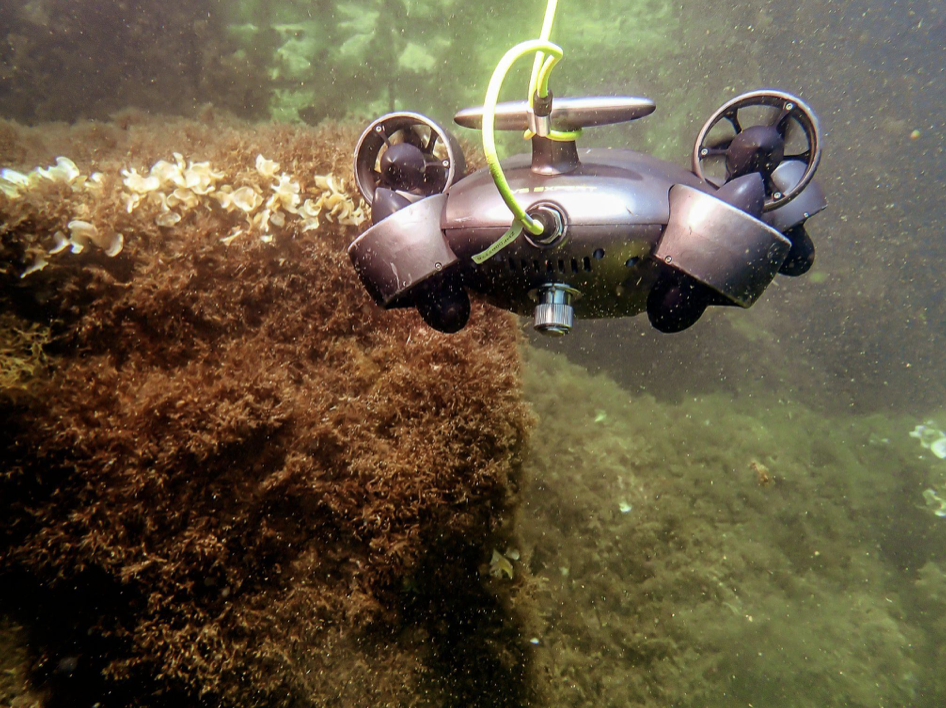
References
Abelson, A., Halpern, B. S., Reed, D. C., Orth, R. J., Kendrick, G. A., Beck, M. W., Belmaker, J., Krause, G., Edgar, G. J., Airoldi, L., Brokovich, E., France, R., Shashar, N., de Blaeij, A., Stambler, N., Salameh, P., Shechter, M., & Nelson, P. A. (2016). Upgrading marine ecosystem restoration using ecological‐social concepts. BioScience, 66(2), 156–163. https://doi.org/10.1093/biosci/biv171
Komyakova, V., Jaffrés, J. B., Strain, E. M., Cullen-Knox, C., Fudge, M., Langhamer, O., … & Haward, M. (2022). Conceptualisation of multiple impacts interacting in the marine environment using marine infrastructure as an example. Science of the Total Environment, 830, 154748.
Pörtner, H.O., Scholes, R.J., Agard, J., Archer, E., Arneth, A., Bai, X., Barnes, D., Burrows, M., Chan, L., Cheung, W.L., Diamond, S., Donatti, C., Duarte, C., Eisenhauer, N., Foden, W., Gasalla, M. A., Handa, C., Hickler, T., Hoegh-Guldberg, O., Ichii, K., Jacob, U., Insarov, G., Kiessling, W., Leadley, P., Leemans, R., Levin, L., Lim, M., Maharaj, S., Managi, S., Marquet, P. A., McElwee, P., Midgley, G., Oberdorff, T., Obura, D., Osman, E., Pandit, R., Pascual, U., Pires, A. P. F., Popp, A., ReyesGarcía, V., Sankaran, M., Settele, J., Shin, Y. J., Sintayehu, D. W., Smith, P., Steiner, N., Strassburg, B., Sukumar, R., Trisos, C., Val, A.L., Wu, J., Aldrian, E., Parmesan, C., Pichs-Madruga, R., Roberts, D.C., Rogers, A.D., Díaz, S., Fischer, M., Hashimoto, S., Lavorel, S., Wu, N., Ngo, H.T. 2021. Scientific outcome of the IPBES-IPCC co-sponsored workshop on biodiversity and climate change; IPBES secretariat, Bonn, Germany, DOI:10.5281/zenodo.4659158.
Vanderklift, M. A., Doropoulos, C., Gorman, D., Leal, I., Minne, A. J., Statton, J., … & Wernberg, T. (2020). Using propagules to restore coastal marine ecosystems. Frontiers in Marine Science, 7, 724.
Author(s)
Maria Angela Reyes
Anna Lloveras
Ignasi Ferrer
OCEAN ECOSTRUCTURES

